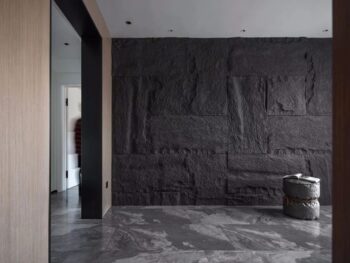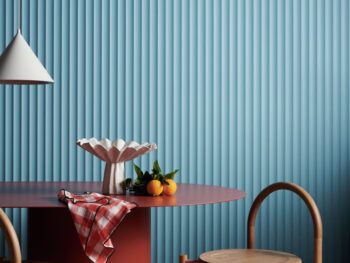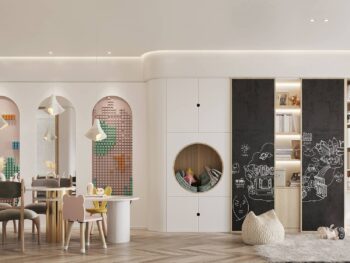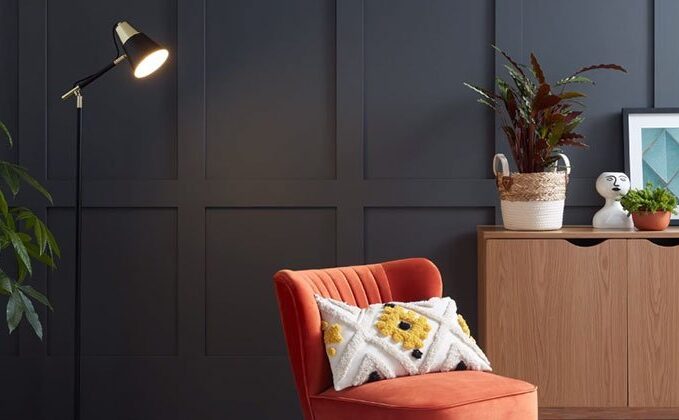
Explore the Charm of MDF Wall Panels in Decoration
In modern interior decoration, the choice of materials plays a key role, not only affecting the look and atmosphere of a space, but also related to the durability and practicality of the decoration. Among the many decorative materials, MDF wallboard has attracted much attention for its unique characteristics and wide application fields. Whether it is a commercial place or a home space, MDF wall panels have become a popular choice, and its advantage is that it can bring smooth, stylish and diverse decorative effects to the space.
This article will deeply discuss the characteristics, advantages and applicable scenarios of MDF wall panels, so as to bring you a comprehensive understanding and help you make wise decisions in decoration. From a material point of view, let’s take a look at how MDF wall panels add color to modern interior design.
Related Articles
Similarities and Differences Between WPC Wall Panel and VJ Panel
Comparison of PVC Wall Panel and VJ Panel
A Guide to WPC vs PVC Wall Panels
I. Introduction to MDF
MDF wallboard is a kind of interior decoration material. It is a board made of Medium Density Fiberboard (MDF for short), which is often used for wall covering and decoration. MDF is a synthetic material that is processed from wood fibers and adhesives through high temperature and pressure. During the manufacturing process, wood fibers are compressed into a board of uniform density, hence the name MDF.
MDF wall panels have a smooth and flat surface, and can be decorated by painting, laminating, skinning, etc., providing a wealth of design and style options. It can imitate the grain and texture of wood, and it can also present other decorative effects, such as stone, tile, etc.
MDF wall panels are widely used in interior decoration, and can be used for wall decoration in living rooms, bedrooms, restaurants, offices and other spaces. Because of its flat surface and easy processing, it can be cut, engraved and customized according to design needs. However, it is important to note that MDF siding is not suitable for use in wet environments, as moisture may cause it to swell and become damaged.
In short, MDF wall panels play an important role in interior decoration because of their flat surface, rich decorative effects and plasticity, giving the space a unique beauty and style.
1. Type of MDF board
– Standard grade MDF
– Elite MDF
– Ultralight MDF
– HDFWR medium density fiberboard
– Melamine MDF
– Plyram MDF
– Interior Grade MDF
– Exterior Grade MDF
2. The use of MDF board
Thanks to its high density and advanced composite material, strong MDF boards are versatile:
– Furniture for residential and commercial buildings
– Cabinets and Shelving
– Roofing material
– Decorations
– Doors and frames
– Floor
– Sound insulation
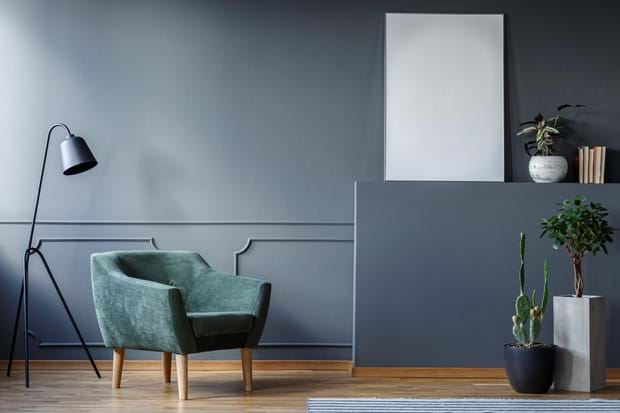
II. The advantages and disadvantages of MDF
Advantages
1. High economic benefit and easy access
One of the advantages of using MDF siding is that it is less expensive than traditional wood. That means more affordability, especially given the current cost of living crisis.
MDF is cheaper to produce than solid wood, at a fraction of the price of natural wood. Since it is made from wood residue, it is less expensive than natural wood and is a cheaper alternative to natural wood. You don’t need to spend a fortune to get the look of real wood.
It’s cheaper than plywood or any other type of wood. Additionally, MDF offers economic value to everyone because it is readily available and can be purchased by everyone at no additional cost. MDF fits into most people’s budgets. And it’s also easy to find any specific size versus oak, mahogany, maple, etc.
2. Friendly to the environment
Another advantage of using MDF is that it is better for the environment. That’s because it’s made using recycled wood leftovers, so it’s tree-friendly. So your new siding not only looks good, but is also better for the environment.
MDF saves trees because MDF material is produced through a recycling process. MDF is produced in a way that reduces raw wood material costs. The MDF is made entirely from plantation wood, ensuring that no trees are felled in the process and thus environmentally friendly.
MDF is environmentally friendly and emits very little formaldehyde, so it is completely safe for use on or off site. Second, MDF is neutral enough not to emit any undesired VOCs (volatile organic compounds) in your home at room temperature.
3. Easier to paint
The surface of MDF wallboard is very flat and smooth, without obvious texture, and it is easier to color than traditional wood. That doesn’t mean you have to compromise on the look of solid wood, as MDF siding can be painted or stained, and can be covered with laminate or wood veneer to mimic natural wood, giving it the same look as real wood. Therefore, it is the best substitute for solid wood in terms of appearance. The MDF panels also give it a real wood-like appearance.
MDF is easy to be painted, stained and stained in any color, unlike natural wood which takes a long time to stain different colors. It is easier to trace on MDF board than on wood.
Laminate and wood veneers can also be applied to MDF panels to mimic the look of real wood. Therefore, in terms of appearance, MDF is the best substitute for solid wood.
4. More resistant to fungi and insects
MDF is an engineered wood made from layers of wood fibers glued together, and the glue used to make MDF also acts as a termite inhibitor. Therefore, we can say that MDF is resistant to termites, borers and fungi. Additionally, MDF is more resistant to corrosion than traditional wood. This is why MDF wall panels are commonly used in bathrooms.
5. Easy to process
Since MDF is made of compressed wood fibers, its suitable density gives it excellent processing properties. Its hard, consistent surface and smooth edges make it easy to cut, carve, nail and stick, allowing for custom shapes and designs as desired.
6. Stable quality
MDF does not shrink or expand due to temperature fluctuations like natural wood. MDF also expands very little from exposure to moisture. It is a dimensionally stable wood product.
MDF wall panels are processed under high temperature and high pressure during the manufacturing process, which makes their density and quality very stable, and it is not easy to deform and warp.
7. High density material
MDF is a precision engineered material so there are no particles in it. It will not crack, scorch or tear when cut with a router, scroll saw, band saw or jig saw. Therefore, it is easy to cut or drill without causing damage since it is not a natural product. Its enormous density allows the use of equipment on it.
MDF holds hinges and screws better due to its high density.
Disadvantages
1. May break
MDF is not as strong as solid wood. This means that one potential problem MDF can have is that it can crack or split under extreme stress, such as when the wall panel is damaged or too much weight is placed on it. At George Panel we use the highest quality MDF to minimize the risk of cracking the panels.
2. Absorbs water faster
Another potential problem with using MDF is that MDF siding can expand. This is because MDF typically absorbs water much faster than traditional wood. So, to prevent this from happening, you have to make sure that the MDF you are using is well-sealed and of high quality.
3. Heavy weight
A final disadvantage of using MDF in siding is that MDF is very heavy due to the density of the product. Therefore, this may make it more difficult to work with compared to normal wood.
4. Not easy to take nails and screws
MDF is not easy to pick up nails and screws. This is because MDF is a dense material. When nails or screws are driven into MDF, they can split the material.
5. Contains volatile organic compounds
MDF contains volatile organic compounds (VOCs). VOCs are gases that are harmful to human health. When MDF is manufactured, VOCs are released into the air. These VOCs can cause respiratory problems, headaches and nausea.
6. The dust generated during the manufacturing process is harmful to breathe
The dust generated during MDF manufacturing and cutting is harmful to breathe. This dust may contain harmful chemicals such as formaldehyde. When this dust is inhaled, it can cause respiratory diseases such as asthma and bronchitis.
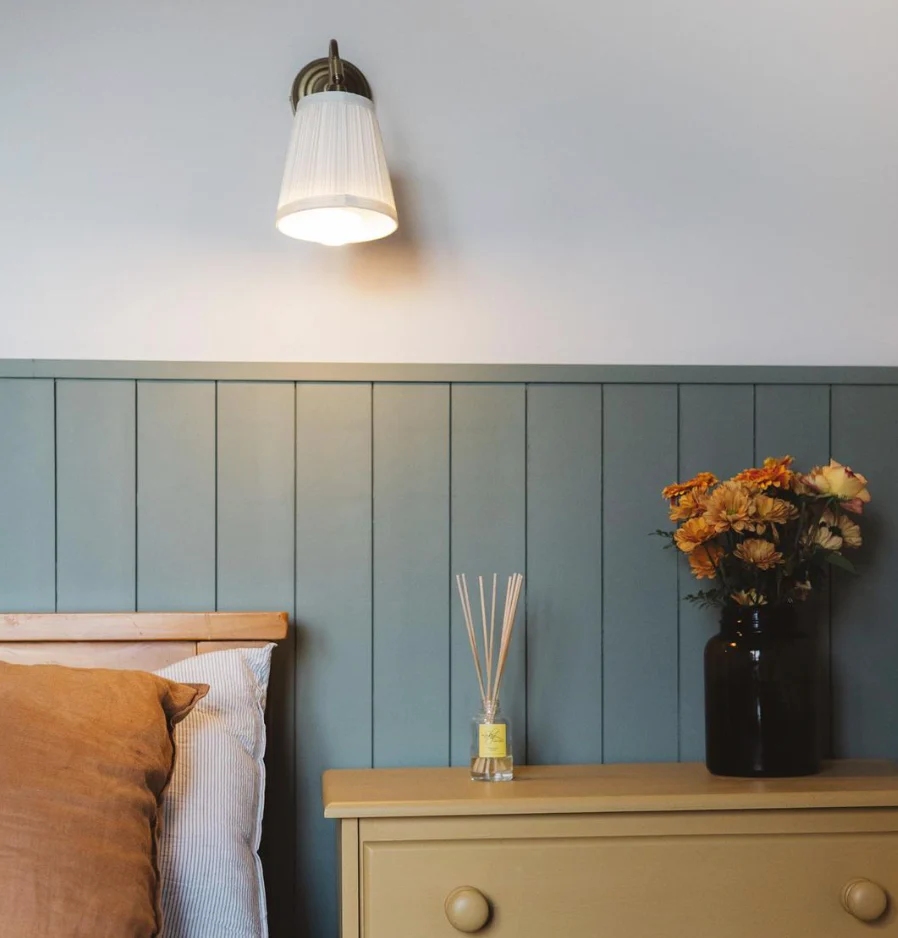
III. The manufacturing process of MDF wall panels
MDF wallboard is a medium-density fiberboard made by processing wood fibers and adhesives under high temperature and pressure. The following are the brief steps of the manufacturing process of MDF wall panels:
1. Raw material preparation
The first step in making MDF siding is to prepare the wood fibers and glue. Wood fiber is typically wood chips, sawdust and wood chips from sawmills, where the wood is treated and cut to obtain the proper fiber length.
2. Fiber preparation
Prepared wood fibers need to be processed for mixing with glue and shaping. This may include steam treatment or soaking to make it easier for the wood fibers to bond with the glue.
3. Adhesive addition
During mixing, the glue is added to the wood fibers. The types of adhesives may be urea-formaldehyde, phenolic, phenolic-urea-formaldehyde, etc. These adhesives are capable of firmly bonding wood fibers together at high temperatures.
4. Mixing and dispersing
The wood fibers and glue are mixed to ensure that the glue covers and bonds the fibers. A disperser will ensure a homogeneous mix.
5. Molding
The mixture is put into a molding machine, through high temperature and pressure to form the shape of the MDF board. Heat and pressure inside the forming machine combine the wood fibers with the glue to form a strong board.
6. Cooling and cutting
The formed MDF board needs to be cooled, then cut and trimmed to obtain the required size and flatness.
7. Sanding and coating
In order to obtain a smooth surface, MDF boards are often sanded. Subsequently, the MDF panels can be coated, painted or covered with decorative materials as required.
8. Packing and shipping
After the final MDF wall panels have been quality checked, they are packaged and ready to be shipped to the retailer or point of use.
This manufacturing process can be fine-tuned depending on the manufacturer and process, but in general, the manufacturing process of MDF wall panels involves mixing wood fibers with glue, shaping, pressing with heat, and processing to form a solid and smooth board.
IV. How to clean and maintain MDF in daily life?
The cleaning and maintenance of MDF wall panels in daily life requires special attention to maintain their appearance and quality. Here are some suggestions for cleaning and maintaining MDF siding:
Daily cleaning
1. Gently clean
Use a soft cleaning cloth or feather sweep to gently clean the surface of the MDF wall panels to remove dust and debris.
2. Wipe with a damp cloth
You can use a slightly damp soft cleaning cloth to wipe the surface to remove more stubborn stains. Make sure not to use too much water, which can cause the MDF to swell.
3. Mild detergent
If there are stains, you can use mild detergent mixed with water, but be sure to avoid using detergents containing acidic or corrosive ingredients, so as not to damage the MDF surface.
Things to avoid
1. Avoid soaking
Do not let water or liquid stay on the surface of MDF wallboard for a long time, because MDF is easy to absorb moisture and expand, and prolonged moisture contact may cause deformation and damage.
2. Avoid collisions with heavy objects
Avoid collisions or impacts with heavy objects on the MDF wall panels to prevent surface dents, breakage or scratches.
3. Avoid high temperature
Avoid exposing MDF wall panels to high temperature or direct sunlight, so as not to cause deformation or color fading.
Maintain
1. Repair scratches
If the MDF wall panel has slight scratches, it can be repaired with a wooden repair compound that matches the color of the wall panel, and then sanded and coated.
2. Repainting
If the coating or paint of the MDF wallboard is damaged or faded, repainting can be considered to restore its appearance.
Overall, regular gentle cleaning and avoiding exposure to moisture are key to maintaining the appearance and quality of MDF siding. If there is obvious damage or wear, timely repair and maintenance can prolong its life and keep it looking good.
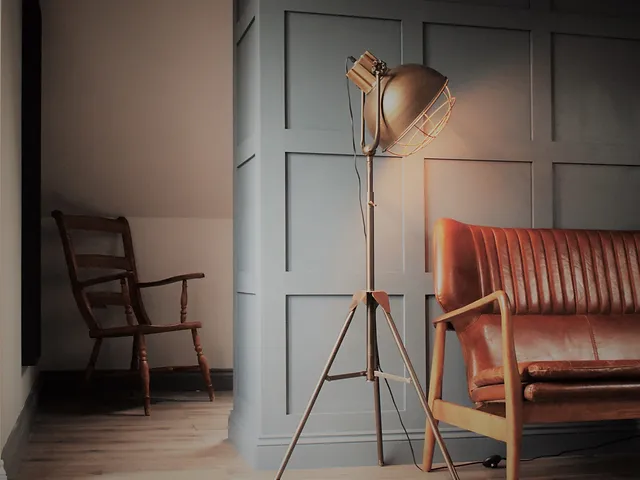
V. Frequently asked questions
1. What thickness of MDF should be used for wall panels?
The thickness of the MDF is really up to your personal preference. However, using any material less than 6 mm thick may not produce the texture you desire, while using any material over 18 mm may be too thick. At George Panel we supply MDF panels in thicknesses ranging from 3mm to 30mm, all available to be cut to your dimensions.
2. How to install MDF wall panels?
First, the MDF material is cut to size, if there are any holes in the walls, they should be covered, and the walls are sanded down to create a smooth, flat surface. Next, position the panel where you want it on the wall and use a spirit level to make sure the panel is level. When you’re sure the panels are straight, mark with a pencil where you want the panels to go, and do a final check to make sure they’re level and evenly spaced. Once you’re happy with where the panels are, you can use adhesive to attach them to the wall.
3. What is the price of the wall panels?
The cost of wallboard depends on factors such as materials, adhesives, primer and paint. Often, most of what you need is probably already in your home from previous projects. So if you only need MDF, the cost will depend on the thickness and number of panels you need. When it comes to cutting plastic film, we offer a wide range of thicknesses from 3mm and prices as low as £14.43 per square meter including VAT.
4. What glue should I use to stick the panels to the wall?
CT1 is the ultimate adhesive solution for sealing and bonding. It bonds successfully to all woods without the need for additional fixtures and will not deform or lose effectiveness over time.
VI. Conclusion
Comprehensively considering the characteristics, advantages and applicable scenarios of MDF wall panels, we can conclude that MDF wall panels, as a multi-functional interior decoration material, play an important role in modern interior design. Its flat and smooth surface, rich and varied decorative effects and relatively affordable cost make it the first choice of many people. Not only that, MDF wall panels can also be cut, carved and customized according to personal preferences, creating a unique space atmosphere.
However, we also need to pay attention to some limitations of MDF wall panels, such as inadaptability to humid environments and relatively fragile characteristics. When choosing MDF wall panels, it is necessary to make a trade-off according to the specific decoration project and the use environment to ensure that it can play the best effect.
In general, MDF wall panels have become a popular choice in modern interior decoration due to their superior decorative performance and plasticity. Whether it is to create a fashionable and modern atmosphere, or to create a traditional and warm atmosphere, MDF wall panels can present a variety of styles according to different design needs. With the continuous development and innovation of technology, the quality and design of MDF wall panels will continue to improve, bringing more possibilities and surprises to our interior decoration. If you have any ideas and suggestions, please feel free to contact us!
Quick Quotation

